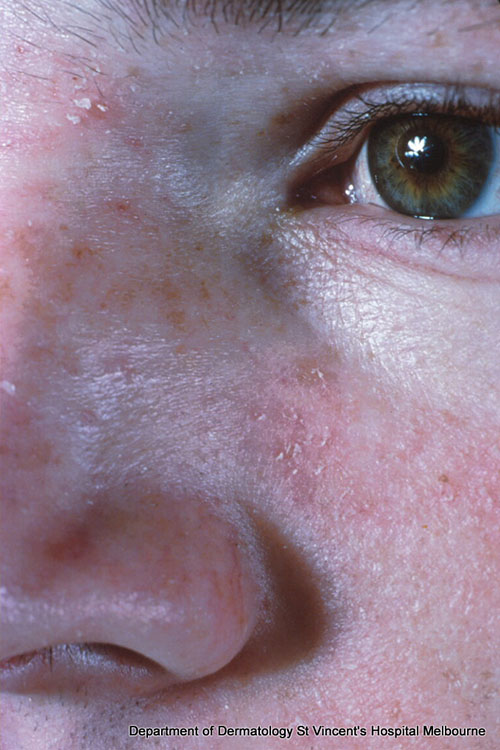Presentation of seborrhoeic dermatitis
Seborrhoeic dermatitis is a chronic relapsing skin eruption characterised by erythema and scaling. The most common form affects the scalp. It can also affect the face, flexures, scrotum and trunk.
Facial seborrhoeic dermatitis mainly affects the medial aspect of cheeks, the nose and the nasolabial folds; see Seborrhoeic dermatitis on the face for a photo of seborrhoeic dermatitis on the face. It is the most common cause of a ‘butterfly’ rash. Systemic lupus erythematosus is a differential diagnosis because a butterfly rash also occurs in acute cutaneous lupus erythematosus associated with systemic lupus erythematosus, but the rash usually spares the nasolabial folds. Also consider rosacea as a differential diagnosis—sometimes rosacea and facial seborrhoeic dermatitis can co-exist.
The cause of seborrhoeic dermatitis is not clear, but Malassezia species are thought to contribute—this is the rationale for treatment with antiyeast shampoos.
Severe and recalcitrant seborrhoeic dermatitis are indicator conditions for HIV testing1. If severe or recalcitrant seborrhoeic dermatitis is identified, offer HIV testing, regardless of whether the patient has behavioural or epidemiological risk factors for HIV infection.
Infantile seborrhoeic dermatitis is a different condition from adult seborrhoeic dermatitis; see here for information on infantile seborrhoeic dermatitis.

Reproduced with permission from the A-Z of Skin [digital]. Australasian College of Dermatologists. Sydney. https://www.dermcoll.edu.au/
